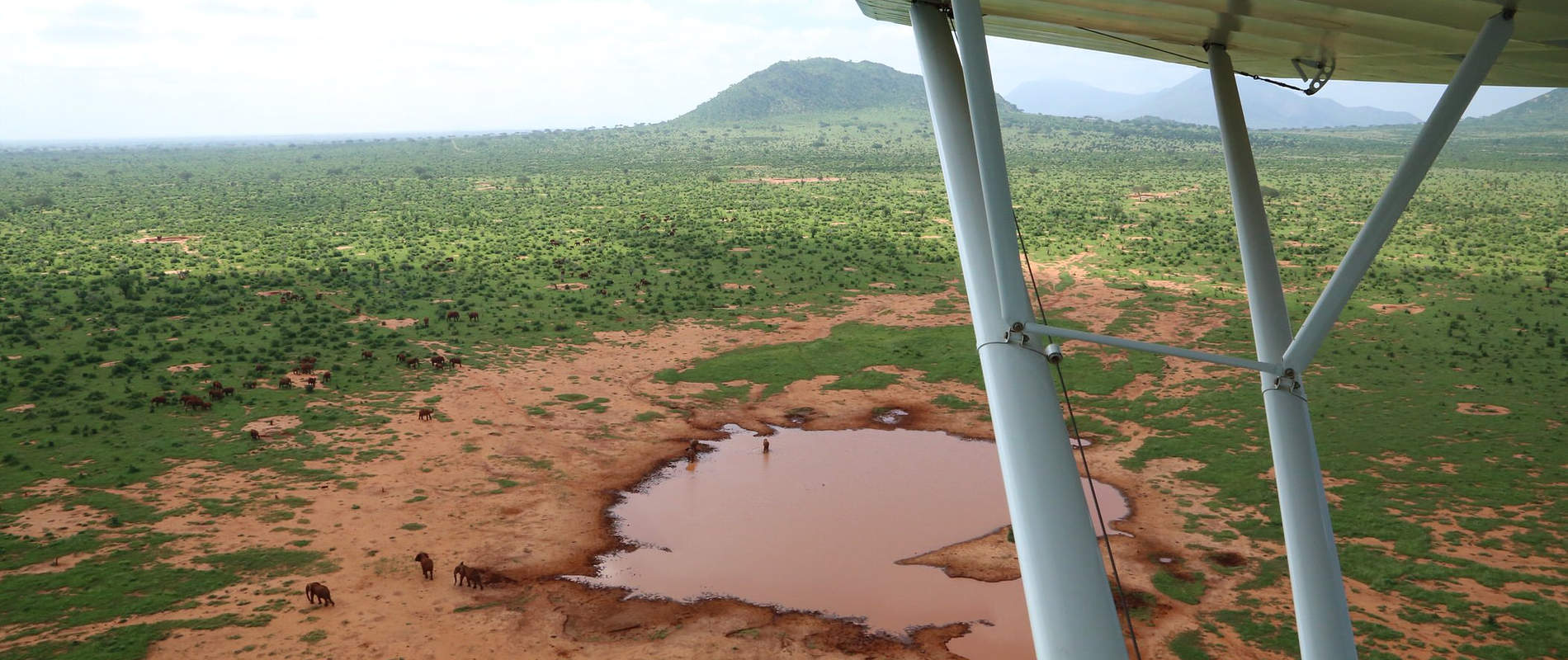January’s report has been a very difficult one to complete, hence the delay, given that we suffered a terrible tragedy
January’s report has been a very difficult one to complete, hence the delay, given that we suffered a terrible tragedy. Harry Dyer, one of our very able bush pilots, had a terrible plane accident on the 12th of the month, thankfully one which he heroically survived, but not before being very badly burnt. The aircraft he was flying was our super cub WRB, the iconic yellow plane that has been featured in many images throughout our reports over the years. This incident has graphically reminded us all of the inherent risks involved with the type of bush flying required to keep Tsavo safe. Harry was flown to South Africa for his medical care and thankfully six weeks on is doing extremely well and we are confident now he will make a 100% recovery. His journey has taken a Herculean effort on his part to overcome sometimes what seemed insurmountable odds, but as a strong and fit 24-year-old Harry has defeated those odds. We are so proud of him, of our teams on the ground who helped him through such testing times, and for all the amazing people who rallied to retrieve Harry, and get him to the best burns unit on the continent.
The focus for January was human-elephant conflict. As waterholes dried up following the rain, the majority of water left was found in man-built dams within communities bordering the Park. This, we think, more than crops, is what attracted elephants into heavily settled areas. Nevertheless, their presence causes considerable distress to communities who rely on crops, and so the Trust has invested more time and resources into helping these communities than any month before.
Poaching activity increased in January, which is typical after the end of the rainy season. As waterholes begin to dry up, the remaining waterholes become attractive points for poachers to build shooting blinds and take aim at visiting elephants. The helicopter, working with DSWT and KWS rangers was able to find and destroy 4 fresh shooting blinds and 1 active harbour, as well as several older shooting blinds in an area south of Ithumba.
The helicopter was also involved in the treatment of two injured elephants during the month. One, reported by Wildlife Works in Maungu was treated on Rukinga Ranch with a festering arrow wound on its flank. The other elephant was a female discovered along the Tiva River by one of DSWT’s super cubs during a routine patrol with a severe injury on her front right leg, also from a poisoned arrow.
You can read about these activities and more in our monthly Aerial Report:
https://issuu.com/davidsheldrickwildlifetrust/docs/asu_jan17
